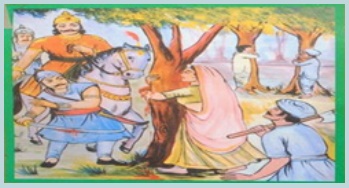Environmental Issues - PeopleŌĆÖs Participation in Conservation of Forests | 12th Zoology : Chapter 13 : Environmental Issues
Chapter: 12th Zoology : Chapter 13 : Environmental Issues
PeopleŌĆÖs Participation in Conservation of Forests
PeopleŌĆÖs Participation
in Conservation of Forests
PeopleŌĆÖs participation is vital in forest
conservation, especially those living in them or close to the forest. This is
referred to as Community forestry, which varies widely in legal, political and
cultural settings and the term covers a wide range of experiences and
practices.
The Bishnois, who are known conservators of
their forest, were inspiration to many peopleŌĆÖs participatory movements for
Environmental protection in India. The Chipko movement resisted the
destruction of forests of India in the 1970s. Sunderlal Bahuguna
was the leader of this movement. People in the movement hugged the
trees, and prevented felling of trees by contractors.
The ŌĆśForest man of IndiaŌĆÖ, Jadav Payeng
who created 1,360 acres of dense and defiant forest was born in Arunasapori (a
river island on the Brahmaputra). He had just completed his Class X exams
in1979 when he started to sow the seeds and shoots on the eroded island covered
with sand and silt. Thirty-six years later he had converted the once
unproductive land into a forest. PayengŌĆÖs forest is now home to five Royal
Bengal tigers, over a hundred deer, wild boar, vultures, and several species of
birds. For his remarkable initiative, the Jawaharlal Nehru University invited Payeng
in 2012 on Earth Day and honoured him with the title of the ŌĆśForest Man of
IndiaŌĆÖ. Later, the President APJ Abdul Kalam felicitated him with a cash award
in Mumbai. The same year, he received the ŌĆśPadma ShriŌĆÖ.
The Indian Constitution also stresses on the
importance of the role of the People in protecting their environment.
Amrita Devi was a brave lady from Khejarli
Village of Jodhpur District, Rajasthan. She sacrificed her life to maintain
Bishnoi Dharma. In 1730, Maharaja Abhay Singh, ruler of Marwar, Rajasthan state
wanted to log green Khejri (Prosopis cineraria) trees to burn lime for the
construction of his new palace. Since there was a lot of greenery in the
Bishnoi villages even in the middle of Thar Desert, the king ordered his men to
get the wood from Khejri trees. When she came to know about the cutting of
trees by the KingŌĆÖs men, she and many others had hugged the Khejri trees to
save from cutting. But kingŌĆÖs men killed Amrita Devi along with more than 363
other Bishnois. It was a Tuesday, black Tuesday in Khejarli. This incident took
place to save trees and is recorded in IndiaŌĆÖs history.

To commemorate her bravery, the Government of Rajasthan and Madhya Pradesh have initiated the prestigious state level award named as ŌĆśAmrita Devi Bishnoi Smriti AwardŌĆÖ for excellent contribution to the protection and conservation of wildlife.
Related Topics